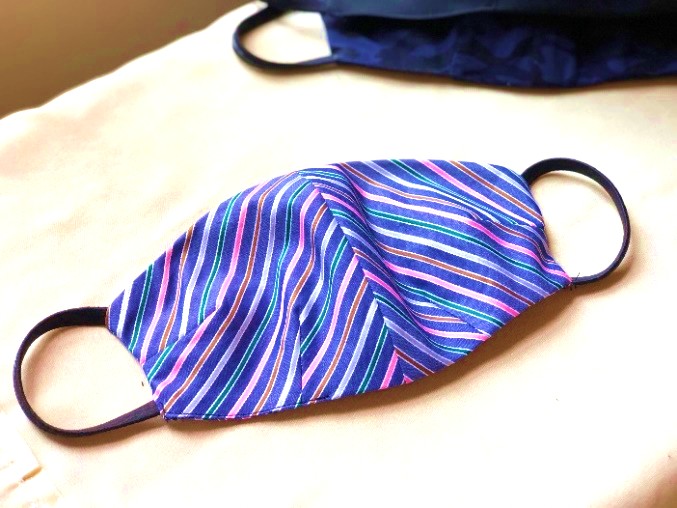Resource
Non-Medical Grade Face Coverings (Global)
DIY Project
Make masks to protect yourself, your family or others in your community.
Note About Volunteering at Home:
The impact of COVID-19 continues to change our daily lives and routines, but the volunteers that nonprofits rely on are more important than ever. The following project can be modified to do at home and delivered via mail or drop off to adhere to the social distancing guidelines set by local and national authorities.
We encourage you to connect with the nonprofits and NGOs in your area for the most impactful ways to donate and any specific safety guidelines they may have. To get started, you can check out your local Points of Light Global Network affiliate or Points of Light Service Enterprise, or search the web for local 501(c)(3) nonprofit organizations. Be sure to ask:
- “Would your facility be open to receiving this project I’m working on at home once it’s complete?”
- “Are there others way I can help?”
PLEASE NOTE: Cloth face coverings should not be placed on young children under age 2, anyone who has trouble breathing, or is unconscious, incapacitated or otherwise unable to remove the cloth face covering without assistance. These cloth face coverings are not surgical masks or N-95 respirators.
Why is it Important?
While the World Health Organization (WHO) states that surgical masks and N-95 respirators should be reserved for healthcare workers and medical first responders, some local governments are recommending face coverings in public where other social distancing measures are difficult. However, many are unable to obtain face coverings due to limited resources, possibly putting themselves and others at risk for disease spread. Making face coverings for yourself and others may help ease the spread of disease when in spaces such as groceries stores, pharmacies and other places where social distancing measures may be difficult to maintain.
Making the Face Coverings
Here are two types of face coverings – a no sew (with an option of some stitching) and sewn option.
- No Sew
Material
- Bandana, t-shirt, pillow cases or other material that is cotton and tightly woven, approximately 50 cm by 50 cm (20 inches by 20 inches)
- Hair ties or rubber bands that are at least 6 ½ cm to 7 ½ cm (2 ½ inches to 3 inches) in diameter. Any circular elastic (or elastic material that can be tied in a circle) that can be wrapped around the ear can work – this can be an opportunity to repurpose items around your home.
Steps
Fold material in half
Fold material again, the top to the middle and the bottom to the middle
Place rubber bands or other circular elastic through the material on both sides and fold inward
You now have your mask! Place the elastic behind your ears and ensure the fabric covers your face and nose.
Optional sewing addition: use a needle and thread to sew the inside mask seam closed.
- Sewn Face Covering
Material
- Paper to make a pattern
- Pencil
- Ruler
- Fabric, 2 pieces no smaller than 26 cm by 30 ½ cm (14 inches by 12 inches)
- Hair ties or rubber bands that are at least 6 ½ cm to 7 ½ cm (2 ½ inches to 3 inches) in diameter. Any circular elastic (or elastic material that can be tied in a circle) that can be wrapped around the ear can work – this can be an opportunity to repurpose items around your home
- Sewing machine or needle and thread
Steps
Choose a pattern online or make one that is 5 ½ on the horizontal sides, 3 ¾ on one vertical side and 6 inches on the other vertical side. Include cheek and chin darts if you wish.
Fold the right sides of cotton fabric together. Place the pattern with larger side of the pattern facing the folded portion ensuring that there is a 9.5 mm (3/8 inch) seam allowance all around (cut to 3.2 or 1/8 inch before the turn and close).
Repeat step two for the second layer, using the same fabric or alternate fabric. Sew the right and left sides together as well as the second layer either by hand or by sewing machine.
Use hair ties or other elastic for closure.
If you can’t find elastic, try other closures.

